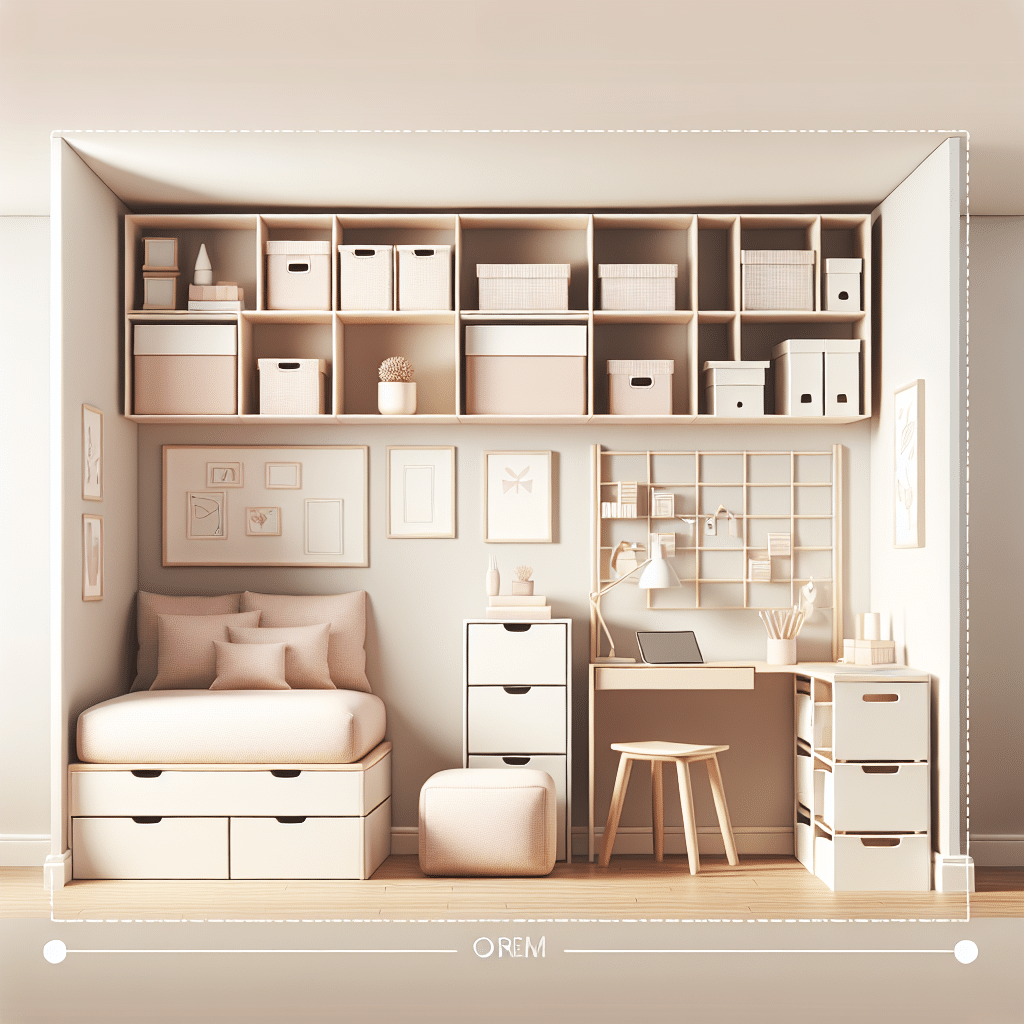Maximize Storage in Small Rooms: A Comprehensive Guide
1. Assess Your Space
Before diving into storage solutions, take the time to evaluate your room. Measure the dimensions to understand the available space accurately. Identify what you need to store and categorize items into essentials, frequently used items, and seasonal or rarely used items. This assessment will guide your storage planning effectively.
2. Vertical Storage Solutions
Utilizing vertical space is crucial in small rooms.
- Wall-mounted shelves can hold books, decorative items, or storage bins without taking up valuable floor space.
- Tall bookshelves use upward space effectively. Opt for a ladder-style shelf or a corner shelf to blend into tight corners while maximizing storage.
- Over-the-door organizers are perfect for small rooms. Use them for shoes, accessories, or cleaning supplies, making the most out of doors that often go unused.
3. Multi-functional Furniture
Furniture that serves dual purposes is a game changer in small rooms:
- Storage ottomans offer seating while providing hidden compartments for blankets, books, or toys.
- Murphy beds fold down for sleeping but retract to create additional space during the day.
- Coffee tables with storage can hide away magazines and remote controls, keeping clutter at bay.
4. Utilize Under-bed Storage
The space under your bed can be a treasure trove for storage.
- Storage bins or drawers designed to slide under the bed can store out-of-season clothing, shoes, or bedding.
- Bed risers can elevate your bed height, providing even more room for larger items underneath.
- Hanging organizers that attach to the bed frame offer a convenient space for small items.
5. Optimize Closet Space
Closets are often underutilized in small rooms.
- Use hanging organizers for shoes, clothes, or accessories. Varied vertical storage options can add shelves or even hooks for bags and jewelry.
- Install double hanging rods to maximize hanging space, separating shorter items like shirts from longer ones like dresses.
- Consider sliding or bi-fold doors instead of traditional doors; they don’t take up room when opened and can allow more access to closet space.
6. Smart Use of Corners
Corners are typically overlooked in small rooms.
- Corner shelves can be a stylish way to display collectibles or plants, adding personality while being functional.
- Corner cabinets can provide additional storage for linens, books, or games discreetly.
- Use corner desks to maintain a productive workspace without occupying significant floor space.
7. Hooks and Pegboards
Hooks and pegboards offer simple solutions to keep items organized.
- Install wall hooks for coats, hats, or bags right next to entryways, making it easy to grab essentials on the go.
- Pegboards allow for flexible storage solutions in craft rooms or kitchens, where tools or utensils can be hung for easy access.
8. Baskets and Bins
Baskets and bins provide flexible, visually appealing storage.
- Use stylish baskets on shelves to keep loose items organized without exposing every detail.
- Labeled bins can help categorize items, making it easier to find what you need without rummaging through every container.
- Consider stackable bins to control clutter vertically, saving floor space.
9. Floating Furniture
Floating furniture is an innovative idea gaining popularity.
- Floating desks provide a workspace without occupying valuable floor area. They can be installed at any comfortable height.
- Floating nightstands keep the floor clutter-free, allowing for cleaner lines and a more spacious feel.
10. Use of Mirrors
Mirrors can give the illusion of more space while providing additional benefits.
- Full-length mirrors or mirrored furniture can reflect light and create a sense of openness, visually expanding the room.
- Hanging mirrors in strategic locations can break up walls and redirect light, enhancing the overall room ambiance.
11. Decluttering Strategy
A successful storage solution often starts with decluttering.
- Regularly assess what you own. Donate or sell items that no longer serve a purpose.
- Implement the one-in, one-out rule, ensuring that every new item brings purpose or joy to your space while encouraging minimalism.
12. Organizing Seasonal Items
Storing seasonal items effectively creates space for everyday essentials.
- Use vacuum-seal bags for clothing, bedding, or bulky items like winter coats, freeing up closet space.
- Clearly label storage bins used for seasonal decorations or clothing, so you can easily identify them when the need arises.
13. Employ Smart Lighting
While lighting types don’t provide physical storage, they can impact the perception of space.
- Use wall sconces to keep tabletop areas clear for storage.
- Natural light should be maximized through mirrors or light-colored drapes, enhancing the room’s overall appeal and sense of openness.
14. Use Color Wisely
Color choices can influence how spatial perception impacts storage.
- Lighter colors or pastels make a room feel larger and more open, whereas darker tones can make a space feel more cramped.
- Consider color-coordinating your storage solutions to blend with your decor style, creating a cohesive look.
By employing these strategies, you can transform your small room into an efficient, organized space tailored to your needs. Embrace creativity and functionality, allowing your small room to shine with personality and practicality.
